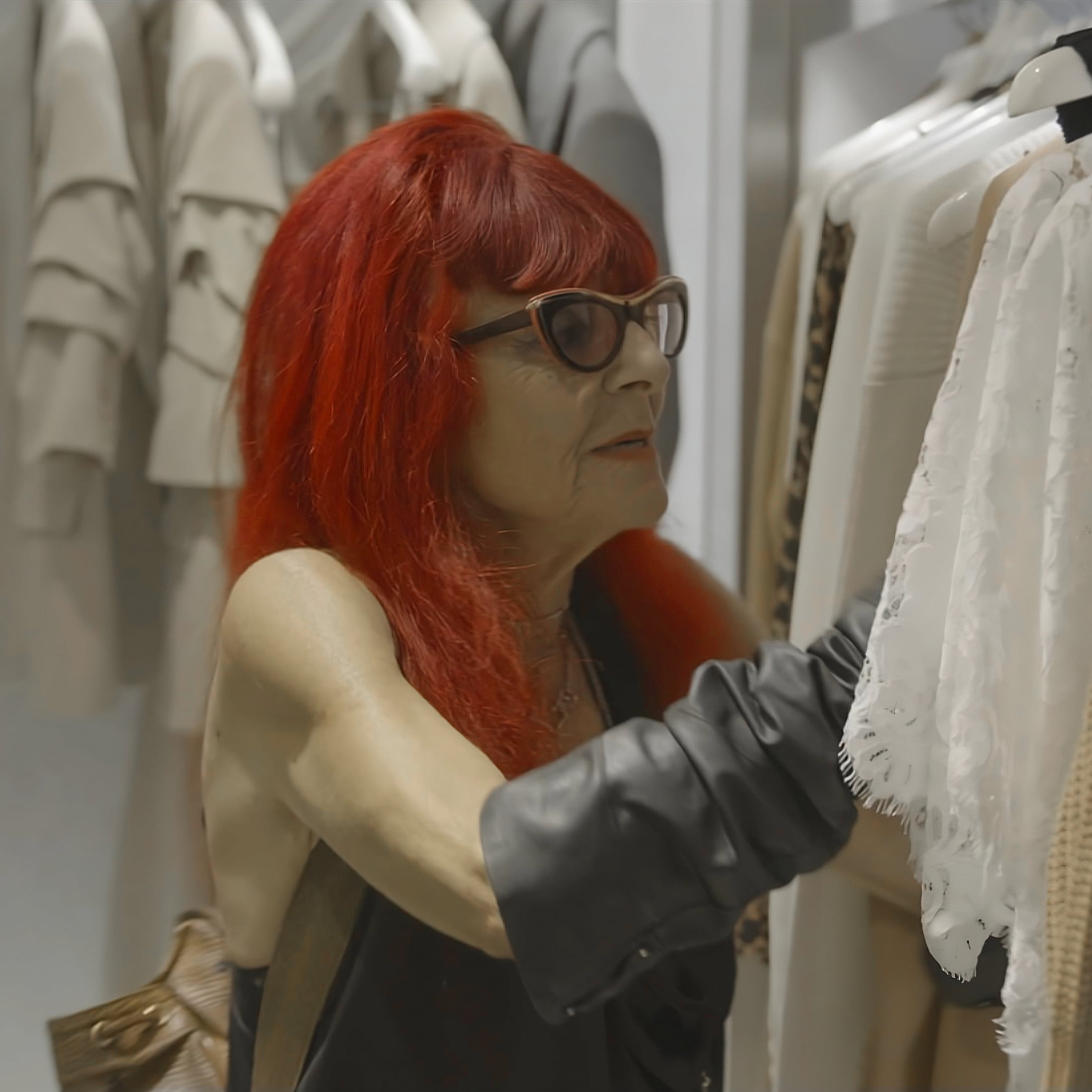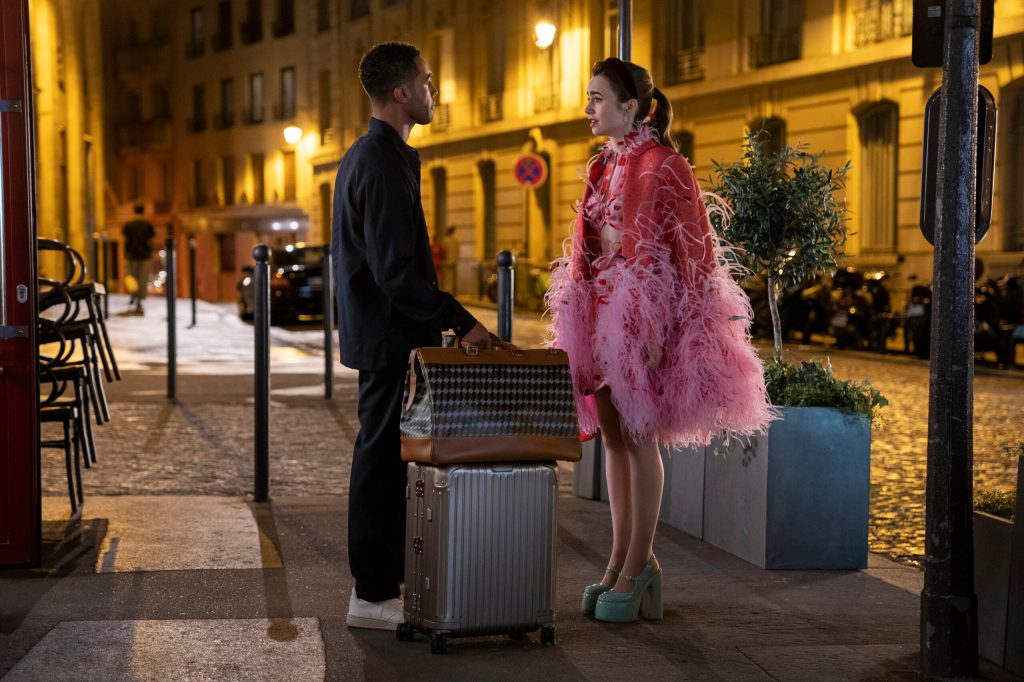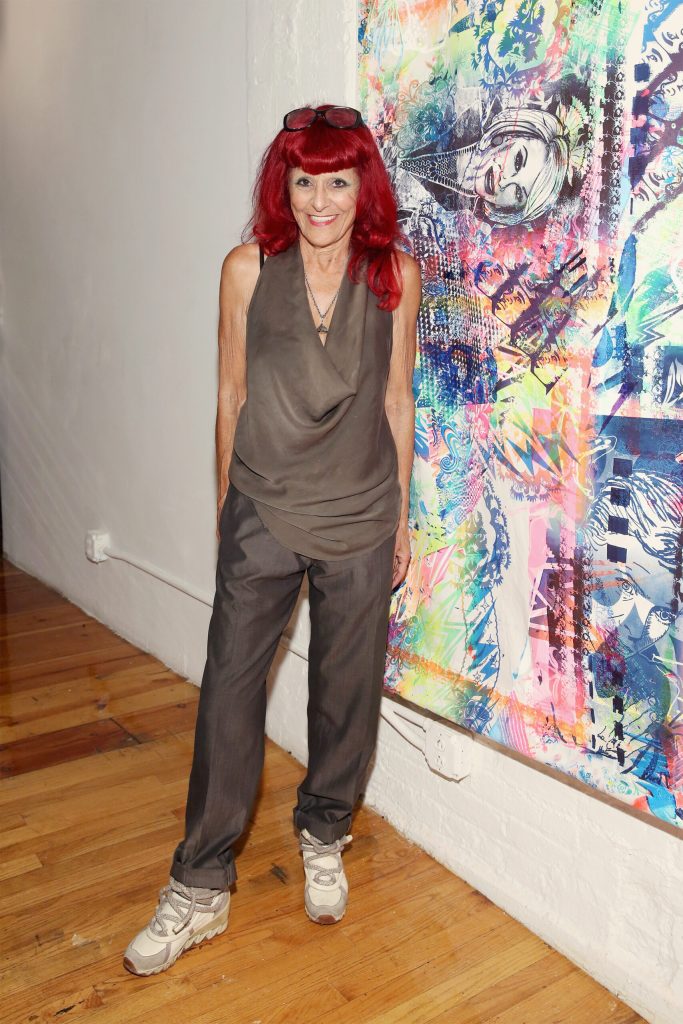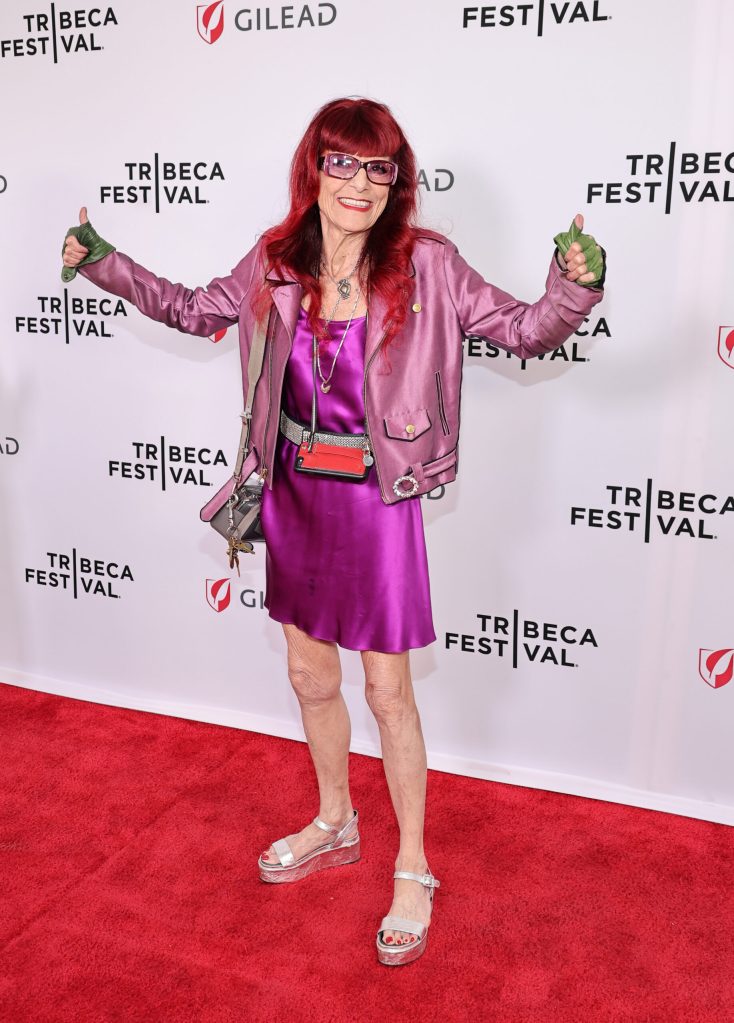
- POPSUGAR Australia
- Fashion
- Patricia Field on Creating Iconic Looks on “Emily in Paris” and “Sex and the City”
Patricia Field on Creating Iconic Looks on “Emily in Paris” and “Sex and the City”

Icon is a word that gets thrown around casually. However, in the case of Patricia Field, the award-winning, legendary costume designer – behind the clothes for “Sex and the City,” “The Devil Wears Prada,” “Ugly Betty,” “Emily in Paris,” and countless more – the term somehow only scratches the surface. In her new documentary, “Happy Clothes: A Film About Patricia Field,” which debuted at the Tribeca Film Festival, you’ll get a glimpse inside the creative process and incredible life and career of a visionary who, at age 81, isn’t showing any signs of slowing down. Directed by Michael Selditch, the documentary includes interviews from actors Sarah Jessica Parker, Kim Cattrall, and Lily Collins as well as commentary from directors Darren Star and David Frankel.
Alongside glimpses of her life and wildly successful career, “Happy Clothes” also brings us inside her infamous downtown boutique and the colorful cast of characters it housed. Having been a New York fixture since the 1960s, the store was a mecca for club kids, fashion outcasts, and drag queens, many of whom are now celebrated designers, musicians, and artists. “Both Keith [Haring] and Jean-Michel [Basquiat] were part of the young people who visited my store on a regular basis,” Field tells POPSUGAR casually. “I met them when they came into my store on 8th Street.”
While you can expect a lot of star-studded flashbacks, the documentary was mostly filmed in 2022 when Patricia was balancing wrapping up season two of “Emily in Paris,” actively on set for “Run the World,” running her ArtFashion Gallery, and working on her autobiography, “Pat in the City.” She opened up about her creative process with actors on set, saying: “Establishing a relationship with the actor is extremely important because the actor at the end needs to trust you. They’re not models going down the runway. They’re portraying scenes and lifestyles. And I love the process of supporting the actor and giving the actor what I have to offer but always [having] the actor in mind.”
Almost a decade ago, I met Field during an advanced screening of “The Other Woman,” an encounter that opened the door to one of the most meaningful and special friendships of my life. Years later, I planned her 80th birthday, which – in a full-circle moment – is forever immortalized in this film. Ahead of the “Happy Clothes” release, I sat down with Field, as well as Selditch and associate producer Erica Guzman, for an intimate chat. Keep reading for Field’s thoughts on everything from working on “Sex and the City” to ageism to her love for New York City.
This interview has been edited and condensed for clarity.
Related: Every Iconic Carrie Bradshaw Outfit From “Sex and the City”
On the "Happy Clothes" Documentary's Origin Story
POPSUGAR: Michael, when did you learn about Patricia Field (Pat), and how did this documentary come about?
Michael Selditch: I’ve known about Pat for forever. I moved to New York in the mid-’80s, and I used to go to her store all the time. And when I was working on the documentary series for CNN called “American Style,” I interviewed a lot of amazing people, and one of them was Pat. That was the first time we met, and I loved our interview. Pat was so great and funny and smart, and when she left the interview, I turned to the crew, and I was like, “Somebody needs to make a documentary on this woman.”
PS: Patricia, you have been approached several times for decades to do a documentary; what made you finally say yes and why to Michael?
Patricia Field: Well, I reviewed Michael’s work and I felt that he was for real and organized and a professional, and that is why I went for it. Yes, it’s true I do receive a lot of options for different projects, including documentaries, and that’s why it’s very important for me to work with professionals.
Erica Guzman: Pat is a very visual person. I think what Michael did that was really smart [and set him apart] is he sent her a sizzle reel, because she had originally turned him down, nicely. And the reel showed her how colorful [the documentary could be]. She saw it and was just in love.
On Key Scenes in the "Happy Clothes" Documentary
PS: “Happy Clothes” is a term used a lot in the film. Patricia, what does that mean to you, and Michael, what drew you to making that the title?
PF: Happy clothes, to me, means my style. I’m very happy to be in and always have been in a professional area that I enjoy and feel natural in. And that I can succeed it. Whatever makes you happy, go for it! That’s my advice.
MS: “Happy” is a very consistent word in Pat’s life because there were a lot of moments in archival footage, and there’s one in the end of the film, where Pat’s in the car, and she’s talking about surrounding herself with youthful people, and it makes her happy. I mean, “happy” has been in Pat’s zeitgeist for many, many years, and so when Pat would say “happy clothes,” when I was watching raw footage, it occurred to me – like the lightbulb went off – like all that’s not just about the clothes, but that’s Pat’s vibe, and it seemed perfect.
PS: The Patricia Field we recognize has iconic red hair and her signature raspy voice. However, in the documentary, there’s a scene in the film from the ’80s, where you have dark, short hair and purple lipstick on, not to mention the most angelic voice. When you made the transition to red hair, was this a turning point in your career or moment of reinvention?
PF: No, it was all natural. Actually, when I watched the documentary, I thought, “Wow! I was so young and my voice was so soft.”
MS: We did that on purpose! We didn’t show her face for like a minute, and you hear her voice [during that scene], and I wanted you to think, who is this? That interview was from 1984, and when we found that interview, we were all really excited.
PF: It was a great surprise for me!
On Her Relationship With the Actors She Dresses
PS: Lily Collins, Kim Cattrall, and Sarah Jessica Parker all praise you in the film for your unique style of collaboration on set. Collins specifically says she was expecting to be told what to do and what to wear by you and instead was surprised that you asked her. Later, you tell Kim, “You can’t throw clothes at people and say ‘wear this’; you have to understand who you’re dressing.” Is this your process? And can you share more about how you work?
PF: Yes, that is [my process]. The key is you really need to understand who you’re dealing with. You’re not dealing with a product; you’re dealing with a human being. Establishing a relationship with the actor is extremely important. Because the actor at the end needs to trust you. They’re not models going down the runway. They’re portraying scenes and lifestyles. And I love the process of supporting the actor and giving the actor what I have to offer but always [having] the actor in mind.
In the case of Lily Collins and “Emily in Paris,” on her way to Paris from California, she came to New York to my gallery. I knew she was coming, so I did some initial shopping, just to get to know her. That was so, so helpful.
On Her Creative Process For "Sex and the City"
PS: In the documentary, David Frankel says that when it came to your vision [on “Miami Rhapsody”], even though he didn’t always understand it, that “Sarah Jessica would go to the moon for you.” And then later, we see Parker say when it came to “Sex and the City” that the director, Darren Star, was creating something that “didn’t have a point of reference” when it came to doing the costumes. Was it the combination of Parker’s willingness and trust, mixed with Star’s hands-off approach, that enabled you to push boundaries to create what you did for “Sex and the City”?
PF: I had never met Darren when Sarah Jessica proposed me to him. We were total strangers. I don’t know if he took a chance on me because of Sarah Jessica, but whatever [the reason it] happened, we’re all happy for it.
PS: What gave you that vision for the characters when you got the “Sex and the City” script?
PF: The first inspiration comes from the actor and their delivery of the character, so I think that’s very important. And of course, in the beginning, I asked Darren, “Can you describe the way you see these characters?” And he did a great job of doing so. He gave me the startup information [I needed], which was great. I knew Sarah Jessica because we had worked together previously down in Miami [for “Miami Rhapsody”], but I didn’t know the other three girls, so that was really helpful to me. I mean, Sarah Jessica was a shoo-in because she’s so fashion . . . and she can run down the street in high heels.
On Her Love For NYC and Her Gallery
PS: You are the quintessential New Yorker, born, bred, and educated there, and despite being well-traveled and on the road a lot throughout your career, this has always been home. What is it about NYC that you love so much?
PF: I love NYC because in my estimation, it is the most diversified city in the world. I never tire of it.
PS: You also have a gallery in NYC. Tell us about your Patricia Field ArtFashion Gallery.
PF: My ArtFashion Gallery features one-of-a-kind designs by the various designers who I have worked with throughout my career. It is located at 200 E. Broadway in the Lower East Side. Come visit me!
On Overcoming Ageism and Looking Toward the Future
PS: Ageism is something a lot of women struggle with in the fashion, beauty, and publishing industry. As someone who did “Sex and the City” in your 50s and who worked on “Emily in Paris” in your 80s – in addition to a documentary, a book, two seasons of “Run the World,” a gallery, and much more – what advice to do you have for people struggling with relevancy and age?
PS: Relevancy is something that comes from the inner part of a person. They need to – in my opinion – identify themselves to themselves: who they are, what they like, what makes them happy. Then [they can] apply it to whatever professional situation that they’re in. But they need to not listen to whatever is popular these days, whether it’s the internet or so on. Whatever you’re good at, go with it. Have confidence, and you will be happy there.
PS: You call your upcoming book, “Pat in the City,” an “autobiography” because a memoir feels too final for you. What would you like to see next?
PF: I cannot design my next move. When it comes, I’ll know it.







